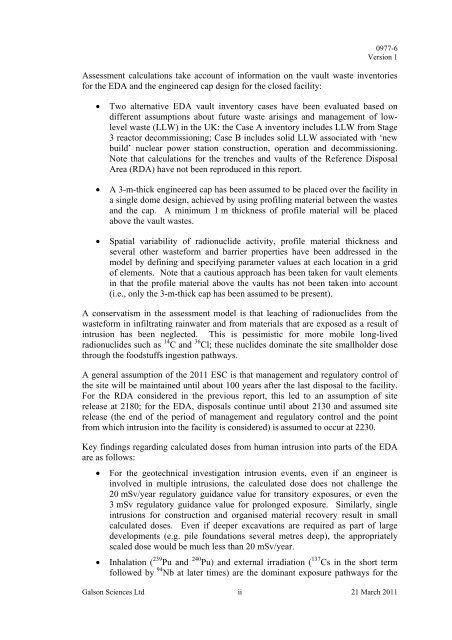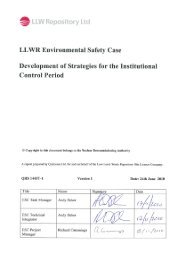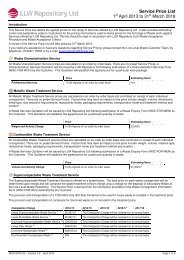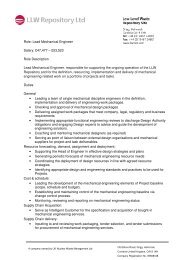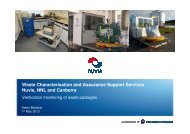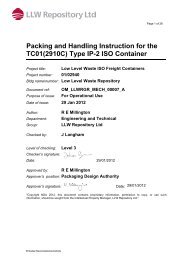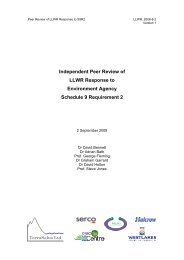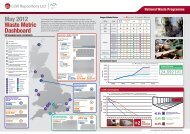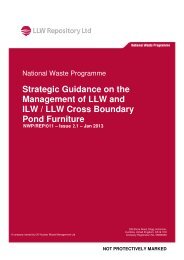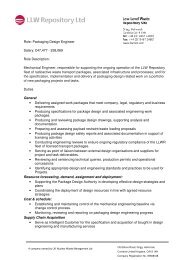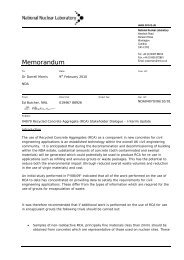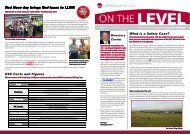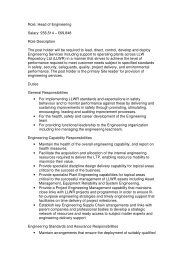Baldwin TD and Hicks TW, Assessment Calculations for Human ...
Baldwin TD and Hicks TW, Assessment Calculations for Human ...
Baldwin TD and Hicks TW, Assessment Calculations for Human ...
You also want an ePaper? Increase the reach of your titles
YUMPU automatically turns print PDFs into web optimized ePapers that Google loves.
0977-6Version 1<strong>Assessment</strong> calculations take account of in<strong>for</strong>mation on the vault waste inventories<strong>for</strong> the EDA <strong>and</strong> the engineered cap design <strong>for</strong> the closed facility:• Two alternative EDA vault inventory cases have been evaluated based ondifferent assumptions about future waste arisings <strong>and</strong> management of lowlevelwaste (LLW) in the UK: the Case A inventory includes LLW from Stage3 reactor decommissioning; Case B includes solid LLW associated with ‘newbuild’ nuclear power station construction, operation <strong>and</strong> decommissioning.Note that calculations <strong>for</strong> the trenches <strong>and</strong> vaults of the Reference DisposalArea (RDA) have not been reproduced in this report.• A 3-m-thick engineered cap has been assumed to be placed over the facility ina single dome design, achieved by using profiling material between the wastes<strong>and</strong> the cap. A minimum 1 m thickness of profile material will be placedabove the vault wastes.• Spatial variability of radionuclide activity, profile material thickness <strong>and</strong>several other waste<strong>for</strong>m <strong>and</strong> barrier properties have been addressed in themodel by defining <strong>and</strong> specifying parameter values at each location in a gridof elements. Note that a cautious approach has been taken <strong>for</strong> vault elementsin that the profile material above the vaults has not been taken into account(i.e., only the 3-m-thick cap has been assumed to be present).A conservatism in the assessment model is that leaching of radionuclides from thewaste<strong>for</strong>m in infiltrating rainwater <strong>and</strong> from materials that are exposed as a result ofintrusion has been neglected. This is pessimistic <strong>for</strong> more mobile long-livedradionuclides such as 14 C <strong>and</strong> 36 Cl; these nuclides dominate the site smallholder dosethrough the foodstuffs ingestion pathways.A general assumption of the 2011 ESC is that management <strong>and</strong> regulatory control ofthe site will be maintained until about 100 years after the last disposal to the facility.For the RDA considered in the previous report, this led to an assumption of siterelease at 2180; <strong>for</strong> the EDA, disposals continue until about 2130 <strong>and</strong> assumed siterelease (the end of the period of management <strong>and</strong> regulatory control <strong>and</strong> the pointfrom which intrusion into the facility is considered) is assumed to occur at 2230.Key findings regarding calculated doses from human intrusion into parts of the EDAare as follows:• For the geotechnical investigation intrusion events, even if an engineer isinvolved in multiple intrusions, the calculated dose does not challenge the20 mSv/year regulatory guidance value <strong>for</strong> transitory exposures, or even the3 mSv regulatory guidance value <strong>for</strong> prolonged exposure. Similarly, singleintrusions <strong>for</strong> construction <strong>and</strong> organised material recovery result in smallcalculated doses. Even if deeper excavations are required as part of largedevelopments (e.g. pile foundations several metres deep), the appropriatelyscaled dose would be much less than 20 mSv/year.• Inhalation ( 239 Pu <strong>and</strong> 240 Pu) <strong>and</strong> external irradiation ( 137 Cs in the short termfollowed by 94 Nb at later times) are the dominant exposure pathways <strong>for</strong> theGalson Sciences Ltd ii 21 March 2011


